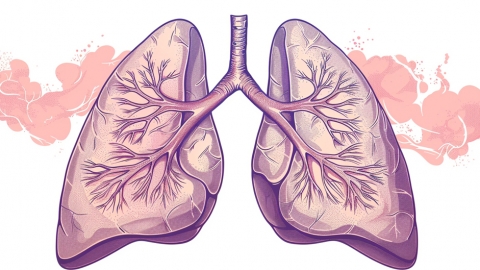Why is the oxygen content in pulmonary venous blood relatively high?
Generally, the main reasons for high oxygen content in pulmonary venous blood include good alveolar ventilation function, reduced metabolic demands of the body, pulmonary arteriovenous fistula, left heart dysfunction, and hypothyroidism. If discomfort occurs, it is recommended to seek timely medical consultation and treatment at a qualified hospital. Detailed explanations are as follows:
1. Good Alveolar Ventilation Function
When the alveolar structure in the lungs is intact and ventilation is smooth, efficient gas exchange occurs between the alveoli and the outside air. Oxygen enters the alveoli effectively, then diffuses through the alveolar wall into the pulmonary capillaries, eventually flowing into the pulmonary veins, maintaining a high oxygen content in the pulmonary venous blood. It is important to maintain indoor air circulation and avoid long-term exposure to enclosed or polluted environments. Regular moderate exercise such as walking or tai chi can also enhance pulmonary ventilation function.
2. Reduced Metabolic Demand of the Body
During states of low activity such as sleep or prolonged bed rest, the metabolic rate of body organs slows down, reducing oxygen consumption. This results in more unused oxygen remaining in the blood, leading to a relatively higher oxygen content in the pulmonary veins. Even with limited activity, regular movement is recommended to avoid complications such as thrombosis caused by prolonged bed rest.

3. Pulmonary Arteriovenous Fistula
An abnormal vascular connection within the lung allows arterial blood to flow directly into the pulmonary veins without undergoing gas exchange in the alveoli, bypassing the oxygen uptake process. This results in a mixture of highly oxygenated arterial blood in the pulmonary veins, increasing overall blood oxygen content. Small, asymptomatic fistulas can be monitored regularly without immediate intervention, while avoiding strenuous exercise to prevent rupture. Larger or symptomatic fistulas may require surgical removal of the pulmonary arteriovenous fistula.
4. Left Heart Dysfunction
When the left heart cannot effectively pump blood, pulmonary venous return becomes obstructed and blood accumulates in the lungs, prolonging its停留 time and allowing more time for gas exchange, thereby increasing oxygen content in the pulmonary veins. Under a physician's guidance, medications such as furosemide tablets, spironolactone tablets, and digoxin tablets may be used to promote diuresis, improve ventricular remodeling, and enhance myocardial contractility, respectively.
5. Hypothyroidism
Insufficient thyroid hormone secretion leads to a decreased metabolic rate, reducing tissue oxygen demand and oxygen consumption in the blood. Excess oxygen remains in the bloodstream, resulting in elevated oxygen content in the pulmonary veins. Under medical supervision, levothyroxine sodium tablets, thyroid extract tablets, and other thyroid hormone supplements may be used. Additionally, maintaining warmth and avoiding cold exposure are important to prevent exacerbation of metabolic symptoms.
In daily life, regular pulmonary and cardiac function evaluations should be conducted to monitor blood oxygen saturation levels; smoking and exposure to secondhand smoke should be avoided to reduce pulmonary damage; and a balanced diet with proper nutrition should be maintained to avoid excessive dieting or overeating, which may impair metabolic function.




